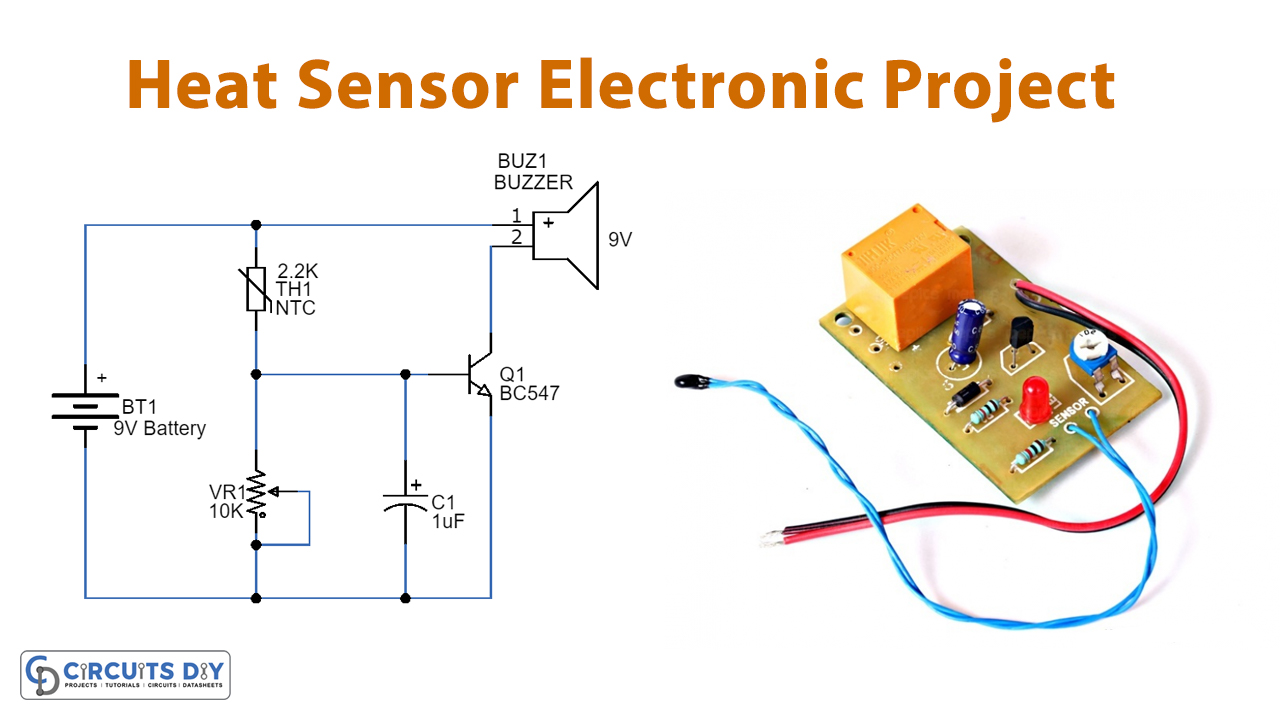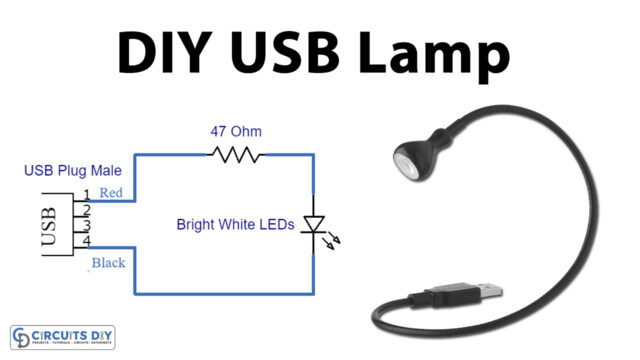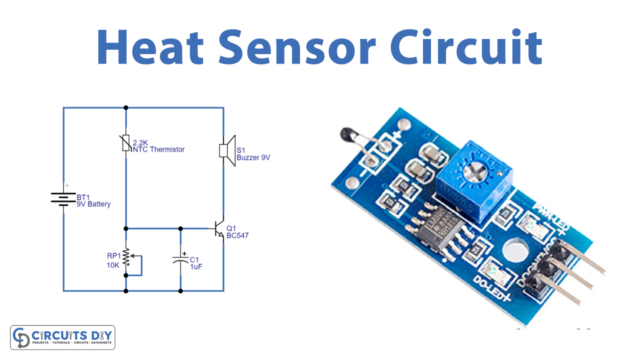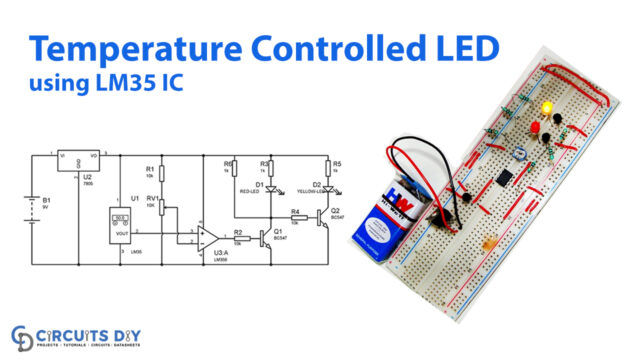Introduction:
A device that is designed to respond to the increase in temperature of an element when it is caught in a fire or high heat is called heat sensitive device. It is used in the circuits built to sense the increasing temperature of the surroundings and in response generates an alarm. The four most commonly used temperature sensors used today are thermocouples, thermistors, RTDs, and semiconductor-based ICs. Each has different properties and is helpful for many applications.
A simple heat sensor circuit typically consists of a heat-sensing component thermistor, which is just like a resistor and changes its resistance on sensing heat, a variable resistor, a transistor, a buzzer for alarming, and a capacitor. This circuit can be used for a variety of different purposes. The explanation and circuit diagram are described in this post.
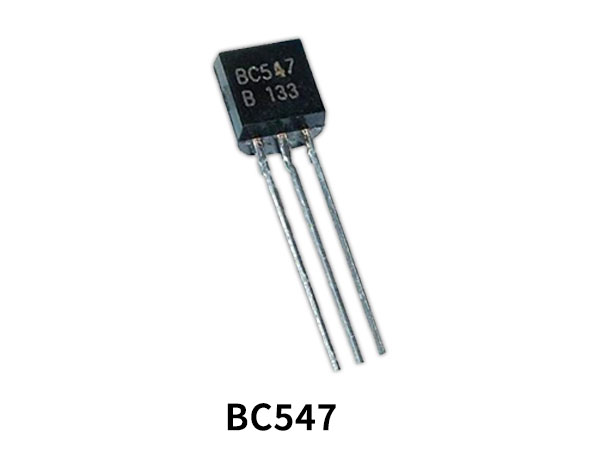
Hardware Components
The following components are required to make Heat Sensor Circuit
| S.no | Component | Value | Qty |
|---|---|---|---|
| 1. | NTC thermistor | 2.2KΩ | 1 |
| 2. | Variable Resistor | 10KΩ | 1 |
| 3. | Transistor | BC547 | 1 |
| 4. | Buzzer | 9V | 1 |
| 5. | Capacitor | 1uF/16V | 1 |
| 6. | Battery | 9V | 1 |
BC547 Pinout
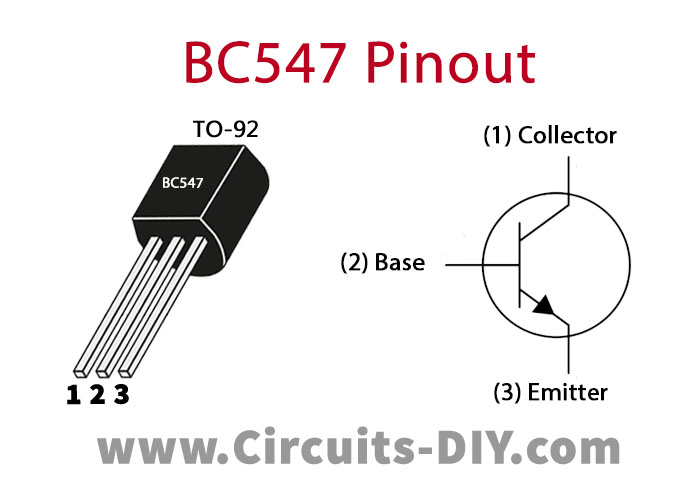
For a detailed description of pinout, dimension features, and specifications download the datasheet of BC547
Heat Sensor Circuit
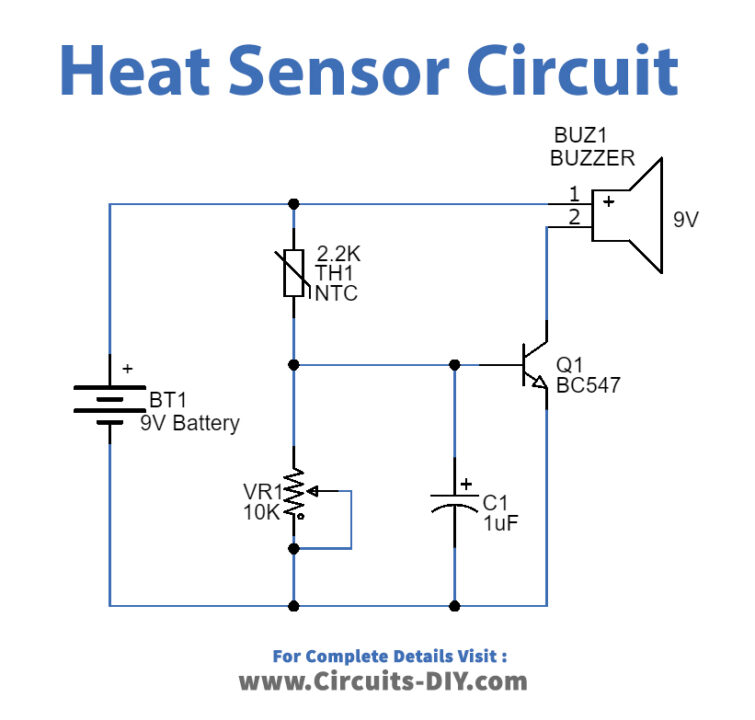
Working Explanation
The circuit uses an NPN transistor BC547 as a switching element for a buzzer. The major component is the NTC thermistor to sense the heat and the variable resistor to adjust the threshold value of the temperature. The thermistor and variable resistor VR1 are connected in series while the base of the transistor Q1 is connected in between the two components. The buzzer is connected to the collector terminal of the Q1 and to the battery.
The thermistor and the VR1 turn on the transistor, as the temperature rises and crosses the threshold value of the thermistor set by the VR1 the transistor gets biased, and the buzzer beeps. When the temperature reduces below the threshold value, the transistor is disconnected from the source and therefore the buzzer stops beeping.
Applications:
The heat sensors are used in different industrial, commercial and residential applications:
- It is used in motors for temperature monitoring to avoid overheating.
- It is used in industries to maintain the temperature of the environment or the system.
- Electric radiators need NTC thermistors to control the heat.
- Heat sensors are also utilized in computer systems to avoid overheating.
- It is used in home appliances like washing machines, toasters, dishwashers, etc.
- Heating/cooling systems and heat exchangers also use heat sensor circuits.


